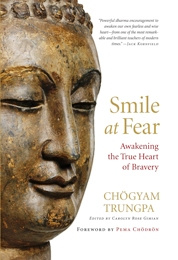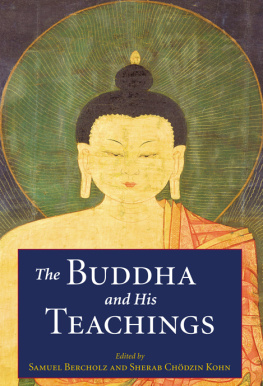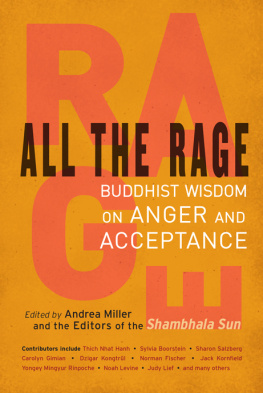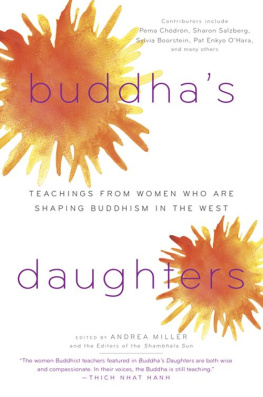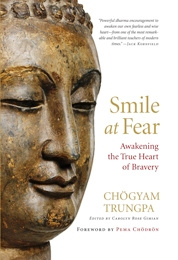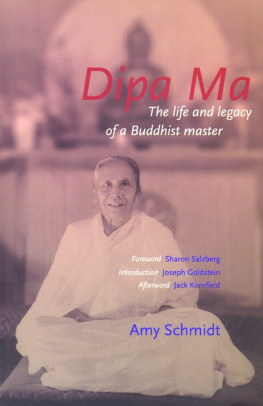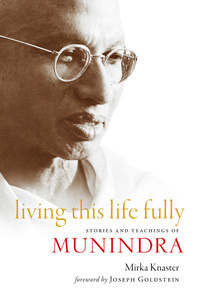The selections, from todays most highly regarded contemporary Buddhist teachers, bring the Dharma eloquently to life for us in our own time, place, and culture. They demonstrate that two and a half millenia have done nothing to diminish the freshness of the Buddhist teachings, or their universal applicability to our lives.
Eastern Horizon
Kornfield has compiled short, easy to digest essays and snippets of wisdom from todays great Buddhist teachers; perfect for a lunch break that is too short for deep reading but long enough for a quick boost of inspiration.
The Buddhist Blog
With its series of concise selections, this book offers brief reminders and reflections on aspects of the human condition, as well as helpful instructions on steps to take on the path of wisdom and compassion.
New Age Retailer Online
The organization and style of these presentations will be appreciated by both the devotee and the uninitiated.
ForeWord Reviews
ABOUT THE BOOK
When the Buddha set in motion the wheel of Dharma, he knew that the teaching he gave was inexhaustiblethat every future generation would find its own skillful ways to convey it to the hearts and minds of those ready to hear. The Buddha Is Still Teaching is testimony to the fulfillment of that promise today. The selections it contains, from todays most highly regarded contemporary Buddhist teachers, bring the Dharma eloquently to life for us in our own time, place, and culture. They demonstrate that two and a half millennia have done nothing to diminish the freshness of the Buddhist teachings, or their universal applicability to our lives.
Contributors include: Ajahn Chah, Joko Beck, Sylvia Boorstein, Tara Brach, Pema Chdrn, the Dalai Lama, Ram Dass, Mark Epstein, Norman Fischer, Natalie Goldberg, Joseph Goldstein, Dilgo Khyentse, Jack Kornfield, Noah Levine, Stephen Levine, Sakyong Mipham, Sharon Salzberg, Suzuki Roshi, Robert Thurman, Thich Nhat Hanh, and Tulku Thondup
To learn more about the author, visit his website at www.jackkornfield.org.
JACK KORNFIELD trained as a Buddhist monk in the monasteries of Thailand, India, and Burma. He is a founding teacher of the Insight Meditation Society in Barre, Massachusetts, and Spirit Rock Meditation Center in Woodacre, California, and has taught meditation internationally since 1974. His books include After the Ecstasy, the Laundry;The Art of Forgiveness, Lovingkindness, and Peace; Meditation for Beginners; and The Wise Heart.
Sign up to learn more about our books and receive special offers from Shambhala Publications.

Or visit us online to sign up at shambhala.com/eshambhala.

Shambhala Publications, Inc.
Horticultural Hall
300 Massachusetts Avenue
Boston, Massachusetts 02115
www.shambhala.com
2010 by Jack Kornfield
Cover art: Standing Buddha, 15th century. Thailand, Lan Na style. Gilt bronze, H. 61 in. (156.2 cm).
Gift of Cynthia Hazen Polsky, 191 (191.423.5).
May have restrictions. Image copyright The Metropolitan Museum of Art/Art Resource, N.Y. The Metropolitan Museum of Art, New York, N.Y. U.S.A.
D00094466. ART403907.
All rights reserved. No part of this book may be reproduced in any form or by any means, electronic or mechanical, including photocopying, recording, or by any information storage and retrieval system, without permission in writing from the publisher.
LIBRARY OF CONGRESS CATALOGING-IN-PUBLICATION DATA
The Buddha is still teaching: contemporary Buddhist wisdom/selected and edited by Jack Kornfield with Noelle Oxenhandler.1st ed.
p. cm.
eISBN 978-0-8348-2181-1
ISBN 978-1-59030-692-5
1. Spiritual lifeBuddhism. 2. BuddhismDoctrines.
I. Kornfield, Jack, 1945 II. Oxenhandler, Noelle, 1952
BQ4302.B83 2011
294.3444dc22
2010024323
Dedicated to the generation of teachers who have so beautifully carried the lamp of the Dharma to the West.
BY JACK KORNFIELD
You hold in your hands a modern treasure, the equivalent of new Buddhist sutras. These are the words of awakening from contemporary masters. The teachings of the Buddha are called the Lions Roar, words of fearlessness and unshakable freedom. On the night of his enlightenment, the Buddha awakened to the vast and timeless peace of nirvana. He proclaimed that the ropes of clinging and sorrow were snapped, the clouds of confusion and fear dissipated, the powers of aggression and doubt were defeated. He was silently and joyfully free.
For forty-five years afterward, he wandered the dusty roads of India proclaiming this freedom and teaching the path of wisdom and compassion to all who had ears to hear. These teachings were eventually written down as sutras, careful records of the teachings of Buddha. These traditional texts include his instructions, his dialogues with students, and accounts of his words pointing the way to liberation. The earliest sutras date from more than twenty-five hundred years ago, while others are teachings from the Buddha Mind written down by enlightened disciples in subsequent centuries.
The words of the Buddha have great power. The ancient stories tell of many who became enlightened simply by hearing him speak. Ananda, the Buddhas attendant, has depicted these teaching scenes for us, describing how the monks and nuns were seated at the cool wood of Tapoda or in Jivakas mango grove, or how a thousand followers were gathered at Vultures Peak. As they listened to the Buddha, their hearts were freed from entanglement in the changing conditions of the world. Their understanding shifted from a limited sense of self, caught in the illusion of separateness and clinging, to the peace of nirvana, open and free. They tasted the joyful freedom experienced when clinging, hatred, and ignorance drop away. Each time he taught, the Buddha pointed the way to this timeless freedom.
In the same way, the freedom taught by the Buddha is brought to life by the teachers of awakening in modern times. When Zen Master Suzuki Roshi first gave teachings on beginners mind, the hearts of many of the students listening were opened to a freedom beyond past and future. When the Dalai Lama took the teaching seat surrounded by thousands of followers in New Yorks Madison Square Garden, he pointed the way to the same liberation and compassion as the Buddha. When Sharon Salzberg and Pema Chdrn speak to crowds of students on loving-kindness and compassion, the human suffering of all who listen, their conflicts and judgment, are all held in a vast spaciousness of freedom that is our true nature.
These are the words you will find in this book. What makes these modern teachings authentic is the understanding that the true Buddha is not limited to the body or mind of a particular man who lived long ago. The Buddha himself explained this. In the ancient sutras, there is a story of a devoted young monk who was so enraptured that he spent weeks sitting at the feet of the Buddha, simply gazing reverently at him as he taught. Finally the Buddha chastised him, saying, You do not even see me. To see the Buddha, you must see the Dharma, the truth. One who sees the Dharma sees me.
In these pages, you will find the Dharma. Dharma means both truth and the path to discover the truth. The Dharma is kept alive by all who follow the path. In the forest monasteries of Asia, just before the dawn, the monks and nuns gather in the Buddha Hall to meditate and to chant ehipasiko, opanaiko, paccattang veditabbho vinuhittii
Next page
